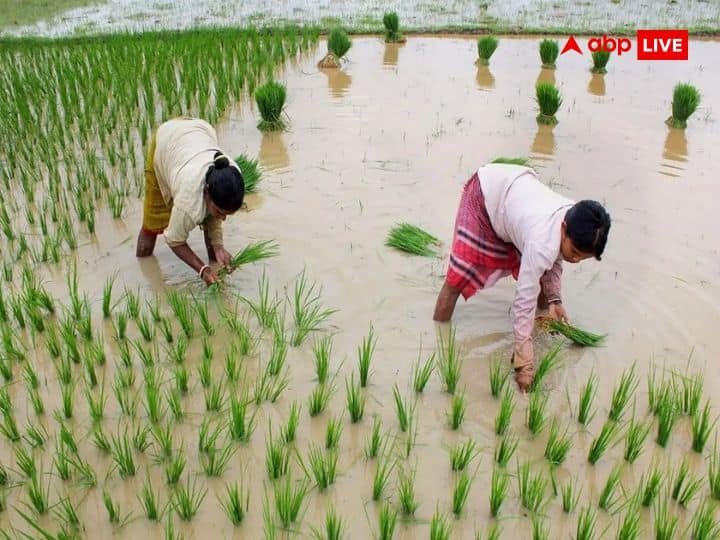How Good Monsoon Rainfall Bolsters Kharif Crops Sowing and Aims to Ease Food Inflation for Common ManFood Inflation Fear: The month of July is coming to an end. And it is a matter of relief that even though it is late, monsoon rains have been seen in many states of the country. Barring Bihar, East Uttar Pradesh, Jharkhand and West Bengal, most of the states have received above normal rainfall in the month of July. Due to the monsoon rains in the month of July, there has been a sharp increase in the sowing of Kharif crops.
Sowing of Kharif crops has been better
Except pulses, there has been an increase in the sowing of other crops in the current kharif season. The most important paddy i.e. rice has been sown in more area this year than last year. Paddy was sown in 233.37 lakh hectare in 2023 while in 2022 it was done in 233.25 lakh hectare. Farmers have got relief due to more than normal rains, but the most relief has been taken by the Modi government at the center, which has to face the general election in 2024 next year and in recent times the prices of food items have increased. Due to the boom, inflation remains the biggest issue.
Better monsoon rains needed
But the challenge is not over yet. Most of the Kharif crops are sown during mid-June to mid-August. The rains in August and September are very important for the Kharif crop because this rain has helped in increasing the yield of the Kharif crop. So the rains occurring this month help in filling the rivers, canals, ponds and water reservoirs and the water level under the ground also increases. Due to this, it provides moisture to the rabi crop during the season of rabi crops during winter.
The threat of El Nino has not averted
Till now the figures of sowing of Kharif crops are looking better, but since the beginning of this year, the danger of El Nino which is being told has not been averted. Most of the weather forecasting agencies are anticipating the presence of El Nino even during the cold season this year. Therefore, if the monsoon weakens during August-September, it can affect the rabi crops as well.
decreased rice wheat stock
The government had a stock of 71.1 million tonnes of rice and wheat as of July 1, the lowest in five years. Un Nino and any reduction in the yield of Kharif and Rabi crops can increase the government’s trouble. Because next year in 2024 Lok Sabha elections are to be held. This is the reason why even after the record production of wheat, the ban on the export of wheat has not been lifted by the government and now even the export of non-basmati rice has been banned. The export of sugar was already banned.
The price of tur dal is troubling
Arhar dal prices are already on fire. Arhar dal is available in the retail market for Rs 180 to 200 per kg. So in this Kharif season, sowing of Arhar dal has decreased. Arhar dal was sown in 37.50 lakh hectares in 2022, which has come down to 31.51 lakh hectares in 2023. While the general area is 46.29 lakh hectares. Soybean, groundnut and sesame crops will benefit from better monsoon rains in Madhya Pradesh, Rajasthan and Gujarat and production is expected to be higher.
Sharp rise in food inflation
The rise in the prices of other vegetables including tomatoes is troubling the government. In the month of June, the data of retail inflation has again taken a U-turn. In June 2023, due to a sharp jump in the prices of food items, the retail inflation rate reached 4.81 percent, which was 4.31 percent in May. There has been a huge increase in the inflation rate of food items. Food inflation has increased to 4.49 percent in June, which was 2.96 percent in May 2023. In such a situation, it is very important to have a good monsoon to bring down inflation.

